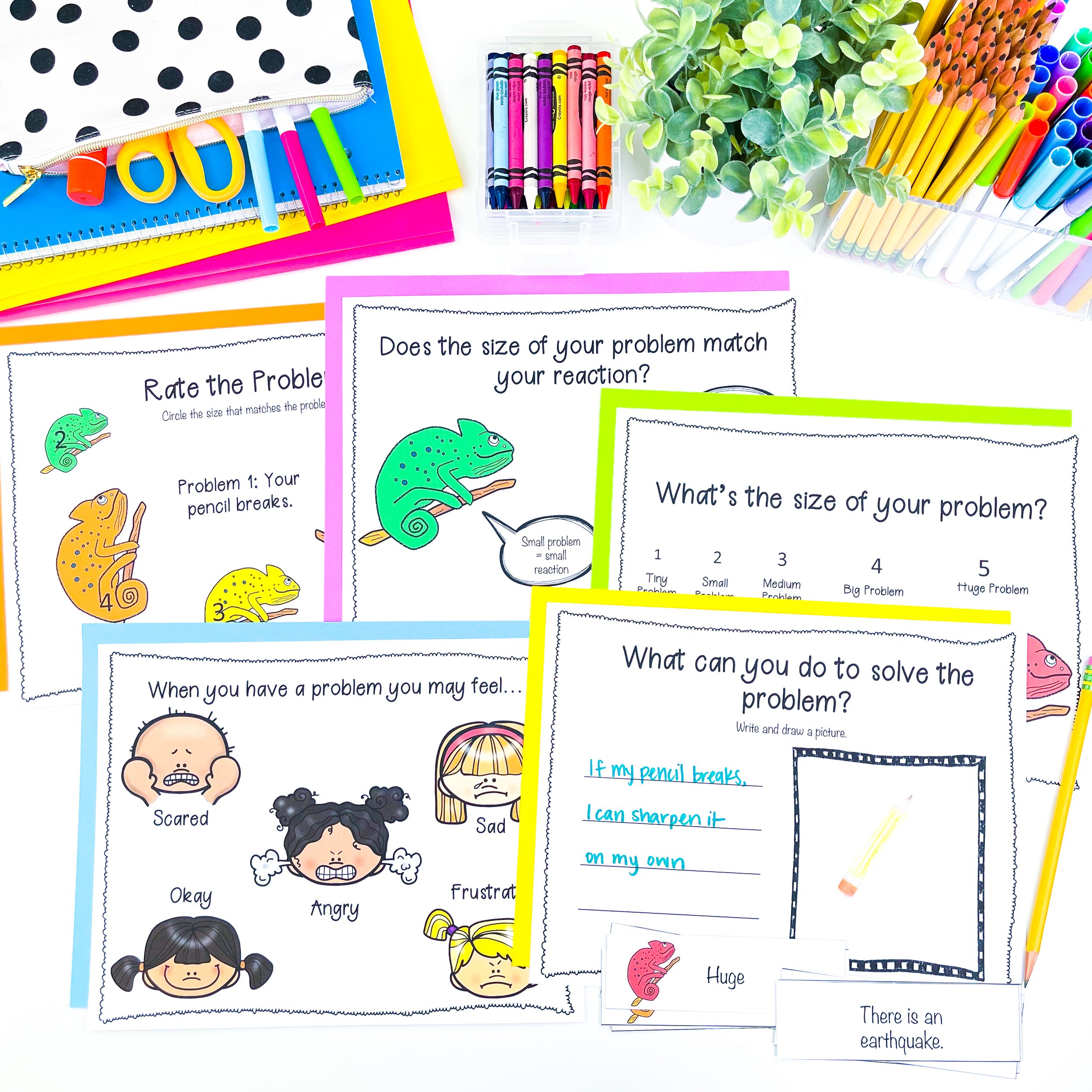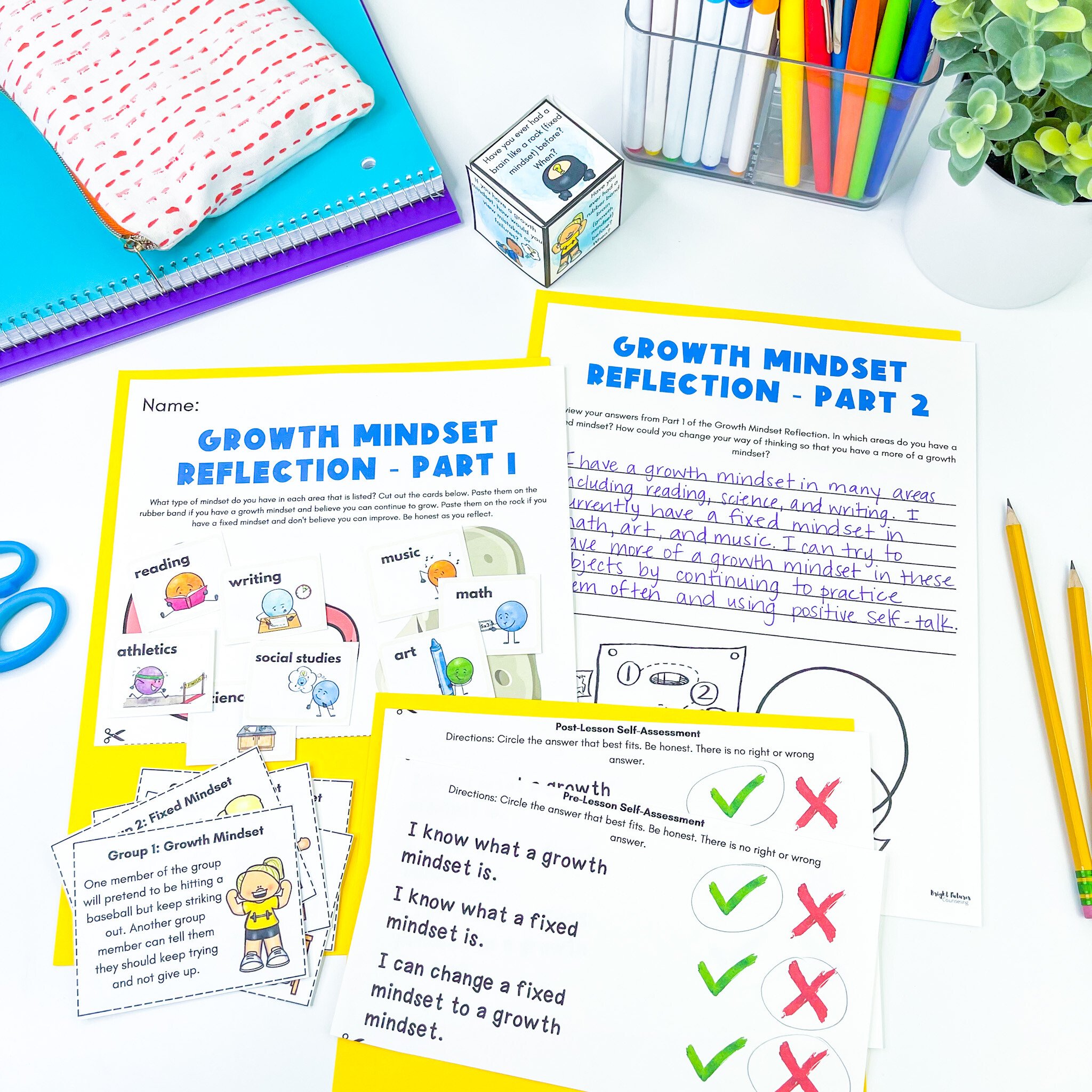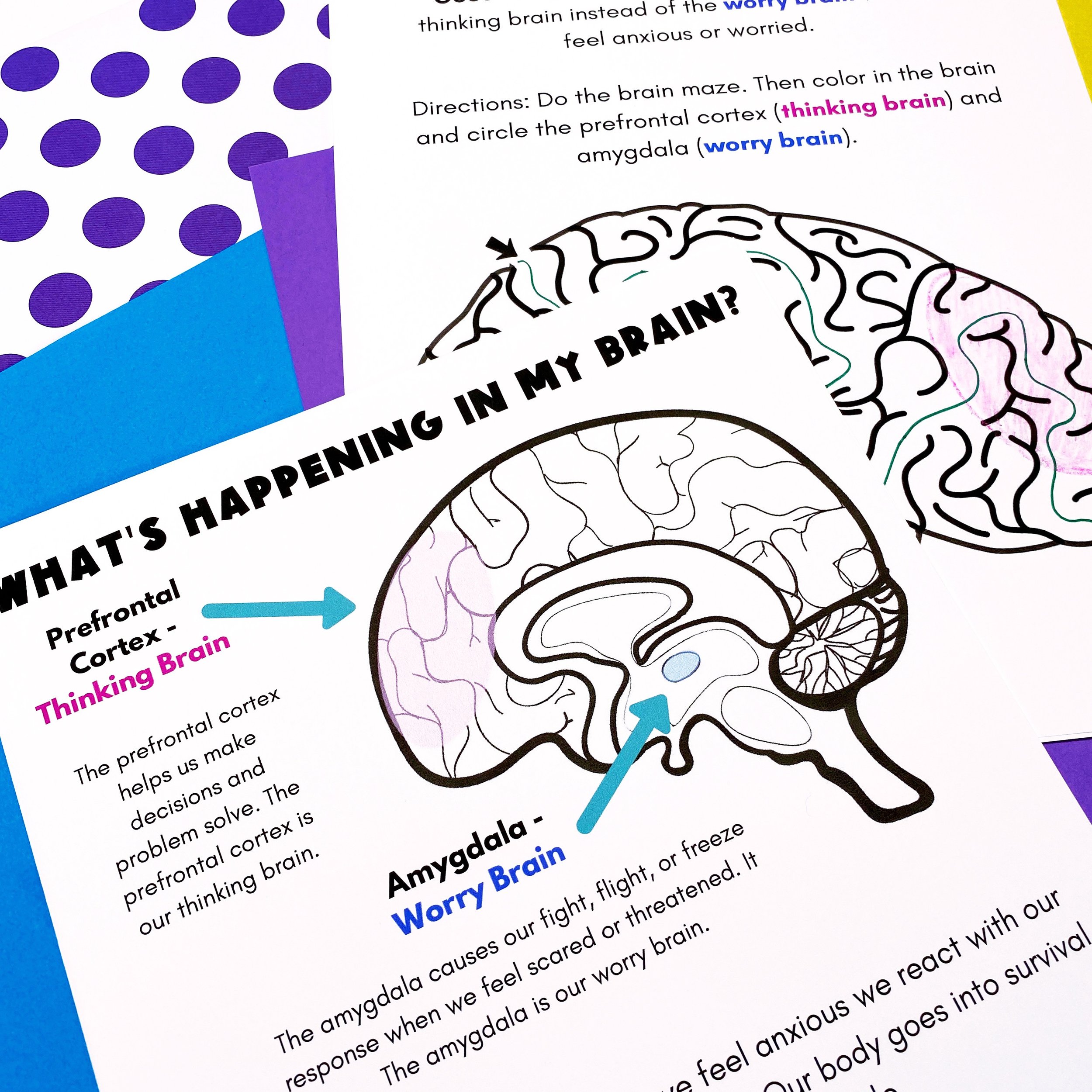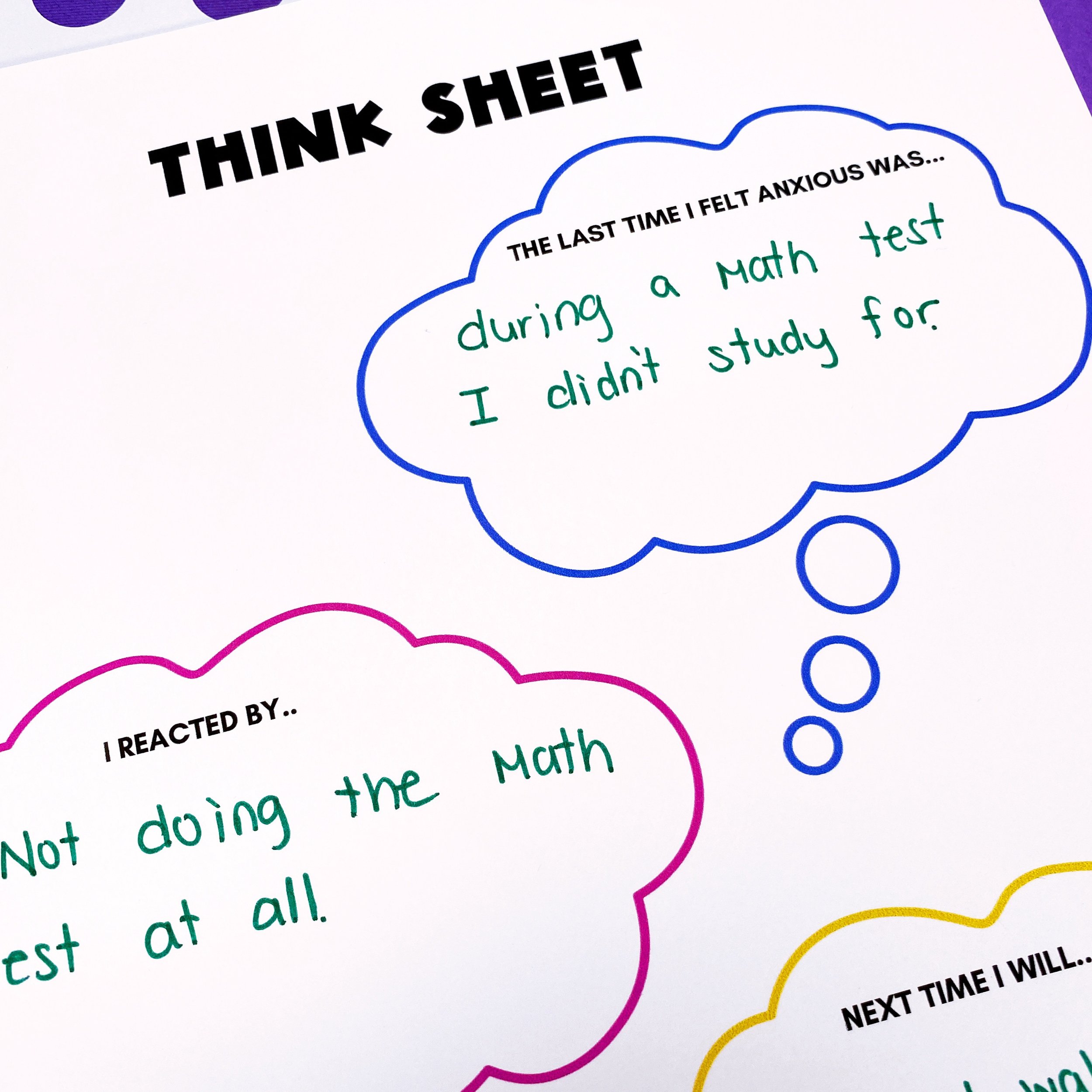A 3-Fold Approach to Helping Elementary Students Cope with Worry and Anxiety
By: Neeti Sarkar
Do you agree that all kids worry, at some point, in varying amounts, for different reasons, and with differing intensities? Starting school. Meeting new friends and teachers. Taking tests. Competing with peers. Learning a new skill or subject. Resolving conflict. Being assertive. Responding confidently in the classroom. Graduating. Family changes. Sickness in the household. Every change/new step to take might seem bigger than it is and yet we cannot discount the stress, worry, and often trepidation that children face as a result of these situations.
Of course, it’s only human to worry about these things but when that cloud of fear or apprehension lingers or revisits more often than it really should, there is a need to support our students through these big emotions.
While as counselors there are several interventions we can plan for, with an increase in the number of students getting worried and anxious, I find value in also getting teachers and parents on board in supporting kids dealing with worry/anxiety. Here are some helpful hints to support our little “worriers” from three different, but equally important angles.
A. As a school counselor:
Going by the MTSS you have in place, you could support students based on their needs in the following ways:
1. Tier 1 Classroom Lessons
Guidance lessons are a great way to approach the problem with a wider lens because we can reach more children at a given time, and also, this is a proactive/preventative approach that would ensure you have fewer students to support later in tier 2 and 3 settings.
I believe, and am sure you would agree, that it is imperative to give students the vocabulary they need to process and cope with big emotions like worry, stress, overwhelm, anxiety, and the list goes on. Therefore, I teach this Self Regulation Lesson to Grades 1 through 5. When kids can first name their problems, they will be able to tame them too, right?
Another important lesson I suggest doing in the classroom would be one on the Size of the Problem. A lesson on Growth Mindset would also be useful in helping students to view challenges as a chance to grow and learn something new, knowing that it is okay to make mistakes along the way.
Of course, teaching students about how the brain works is important for them to truly understand the contrasting roles of the prefrontal cortex and the amygdala. This would help them develop more self-awareness and then use their coping tools to deal with a worrisome situation at hand.
Don’t have enough time for a full-fledged lesson or a series of lessons as listed above? Dive right in. Address stress/worry/anxiety head-on. A CBT-based lesson on “What If?” thoughts and how to reframe unhelpful thoughts is something that’s worked well for my students in the past. You could also use SEL books such as Worry Says What by Allison Edwards, Ruby's Worry by Tom Percival, and Wilma Jean the Worry Machine by Julia Cook to talk about worry and anxiety and how to deal with them positively.
2. Tier 2 Small Group Sessions
It is usually by the end of Semester 1 that teachers and I can identify those students who might benefit from being in a small group that meets once a week to work on coping with worry/stress/anxiety. One of my go-to resources to use with such kids is this Stress and Anxiety Boom Cards set. I even used this 8-week Stress Management Group with Upper Elementary students last year. In a setting like this, role-playing, CBT activities, charades, and guided meditations work fantastically.
3. Tier 3 Individual Sessions
In a one-to-one setting, I spend ample time teaching students deep breathing exercises, using positive self-talk, coping skills such as journaling, drawing, craft, etc., and relaxation techniques such as visualization, progressive muscle relaxation, and guided imagery. If you’re looking for a low-prep/ready-to-use individual counseling curriculum, this is the one I’ve been using.
B. As a teacher:
1. Create a warm and welcoming environment
By greeting students with a smile/fistbump/high-five, using positive language, and showing a genuine interest in building a relationship with them, taking the time to know them individually, teachers, who are pretty much the first people kids interact with at school, can create a classroom environment that is friendly and safe. Teachers need to encourage students to express their feelings and emotions by first creating a culture of openness and acceptance. Practicing mindfulness as a class and having a calm corner in the classroom are other must-dos, I feel.
2. Provide structure and predictability
One of the main things anxious kids need is routine! I cannot emphasize this enough. Teachers can provide structure and predictability by establishing routines, providing clear expectations, and using visual aids/visual schedules. This can help reduce anxiety by providing a sense of stability and control. It is also imperative for teachers to create a plan for emergencies (with the help of the counselor) to deal with any contingencies such as panic attacks.
3. Collaborate with the school counselor
The school counselor can’t be the only adult who can support students who struggle with worry and anxiety. When teachers follow up and check in with students who are seeing the counselor, it makes our job easier. Through circle time, morning meetings, and reaching out to the school counselor for other resources that might help the child in the classroom, this teacher-counselor collaboration can go a long way in helping our students who tend to get anxious easily.
4. Encourage peer support
Another thing that works like a charm in the classroom is when teachers encourage students to support each other by creating peer support groups, buddy systems, or partnerships where they can help each other cope with big feelings like worry, stress, and anxiety.
5. Promote Self-Care
While the school counselor can lead lessons on self-care, it would be great if teachers who see their students every day remind them to practice self-care for their physical, mental/emotional, and social health. Reminding students to take a brain break, eat well-balanced meals, play outdoors, and sleep well, are all important in helping alleviate stress and anxiety.
C. As parents:
1. Listen and validate
It is important for parents to create a safe and open environment for their child to express their feelings and emotions. Encouraging them to talk about their worries and listening without judgment is what kids want. Validating their feelings helps them know that their parents take them seriously. It’s also vital for parents to have their children know that it's alright to feel worried or anxious and that they are there to help them through it.
2. Manage personal/family stress
Of course, you know that children can pick up on their parent's stress, so parents need to manage their stress levels. By practicing self-care, seeking support from loved ones, and finding ways to deal positively with stress, children too will try to emulate their parents and thereby have better ways of dealing with their stressors.
3. Follow routines
Children are creatures of habit. They thrive on routine. They enjoy surprises but generally don’t like being thrown off without prior warning. Establishing routines and providing clear expectations for children who tend to get worried can help reduce anxiety by providing a sense of control.
What are some tried-and-tested strategies you’ve used to support students who tend to worry a lot or get anxious? Which new ones from this post do you think you might try? How easy have you found it to get teachers and parents to also do their part in supporting these kiddos?
About the author: Neeti Sarkar is a Primary School Counselor at an IB school in Bangalore, India. Over the span of almost 10 years, she’s worked with students aged 3-18, but enjoys working with the littles the most. Neeti’s also a seasoned journalist, so when she isn’t making behaviour plans, teaching guidance lessons, and supporting her school community in various other ways, she makes time for her other passion- writing.










